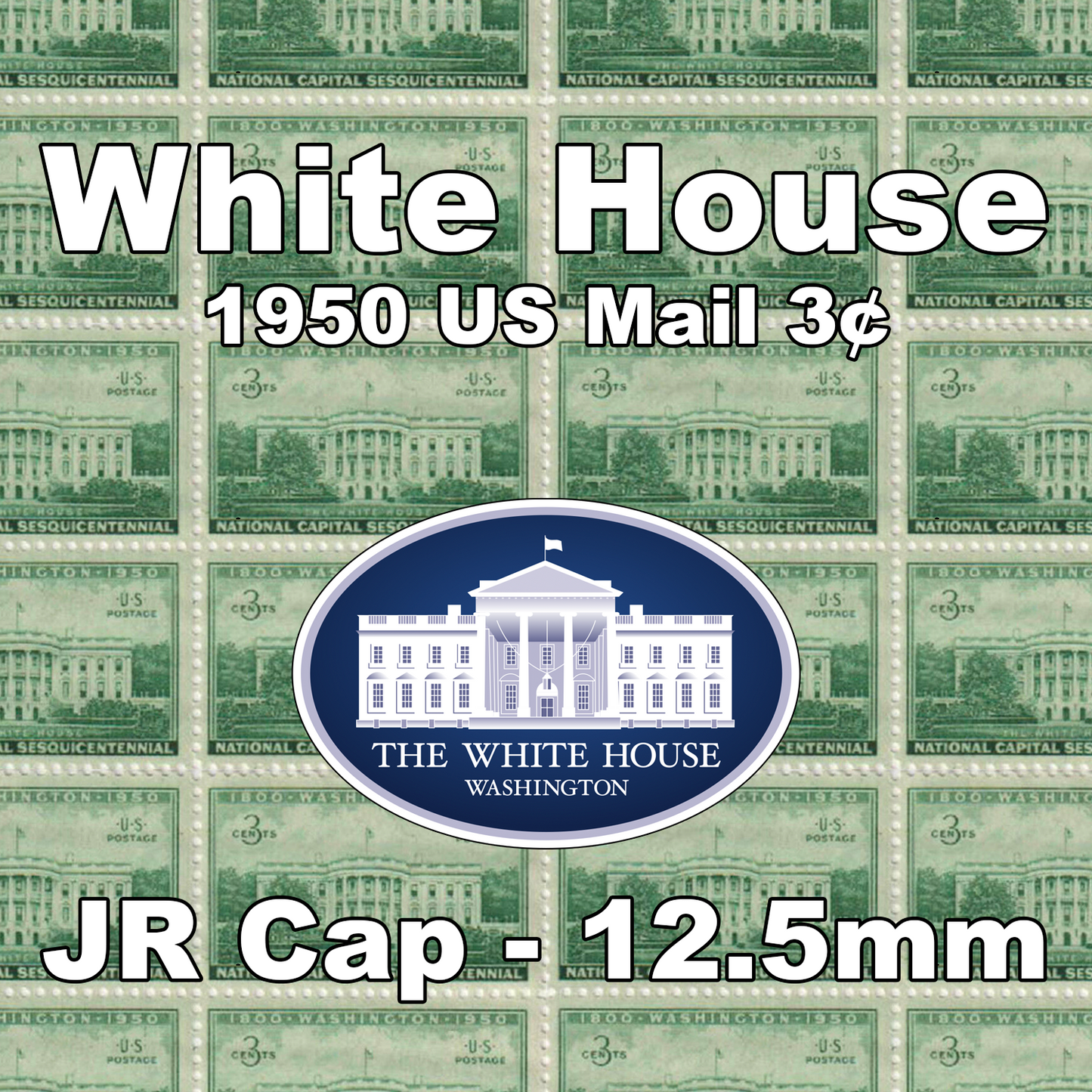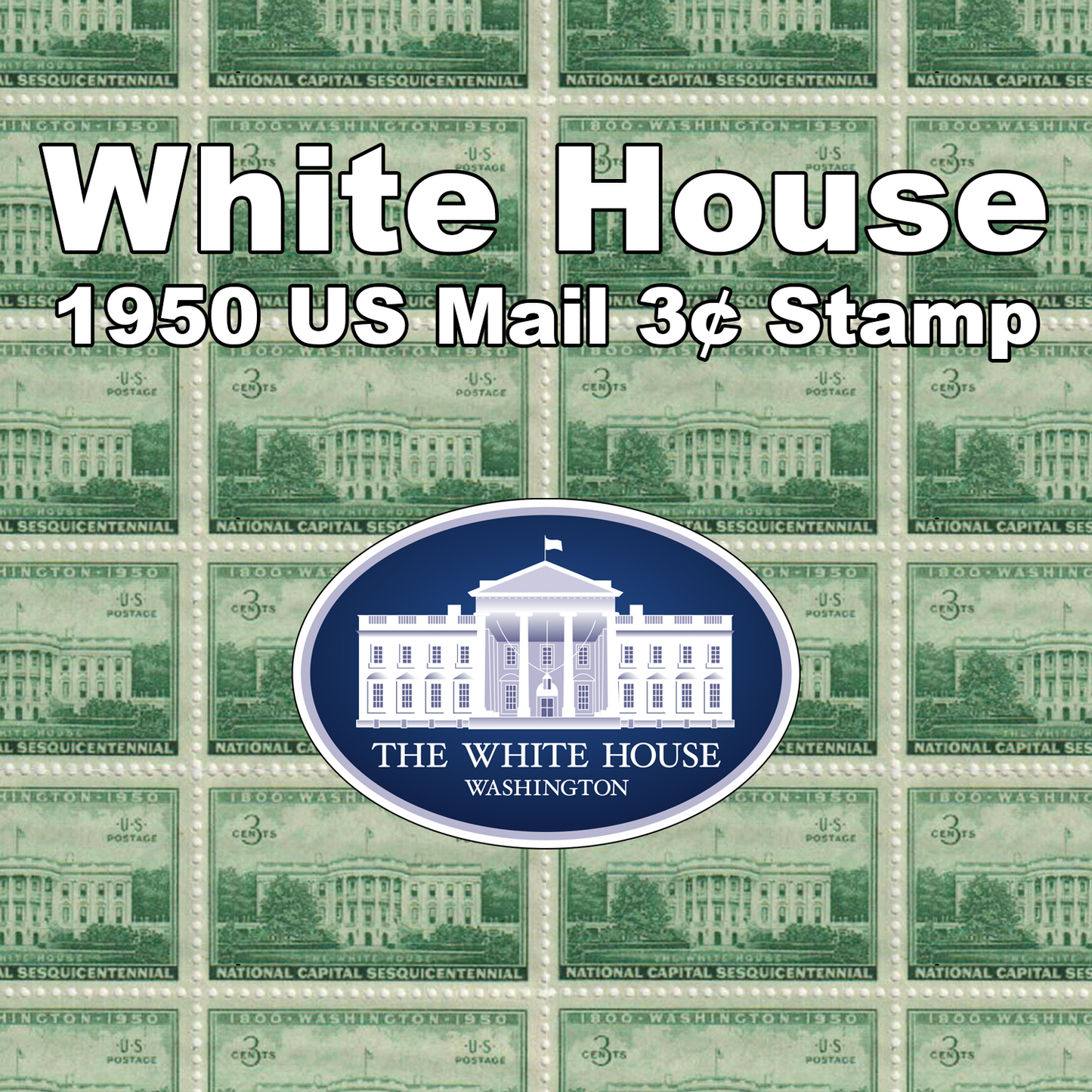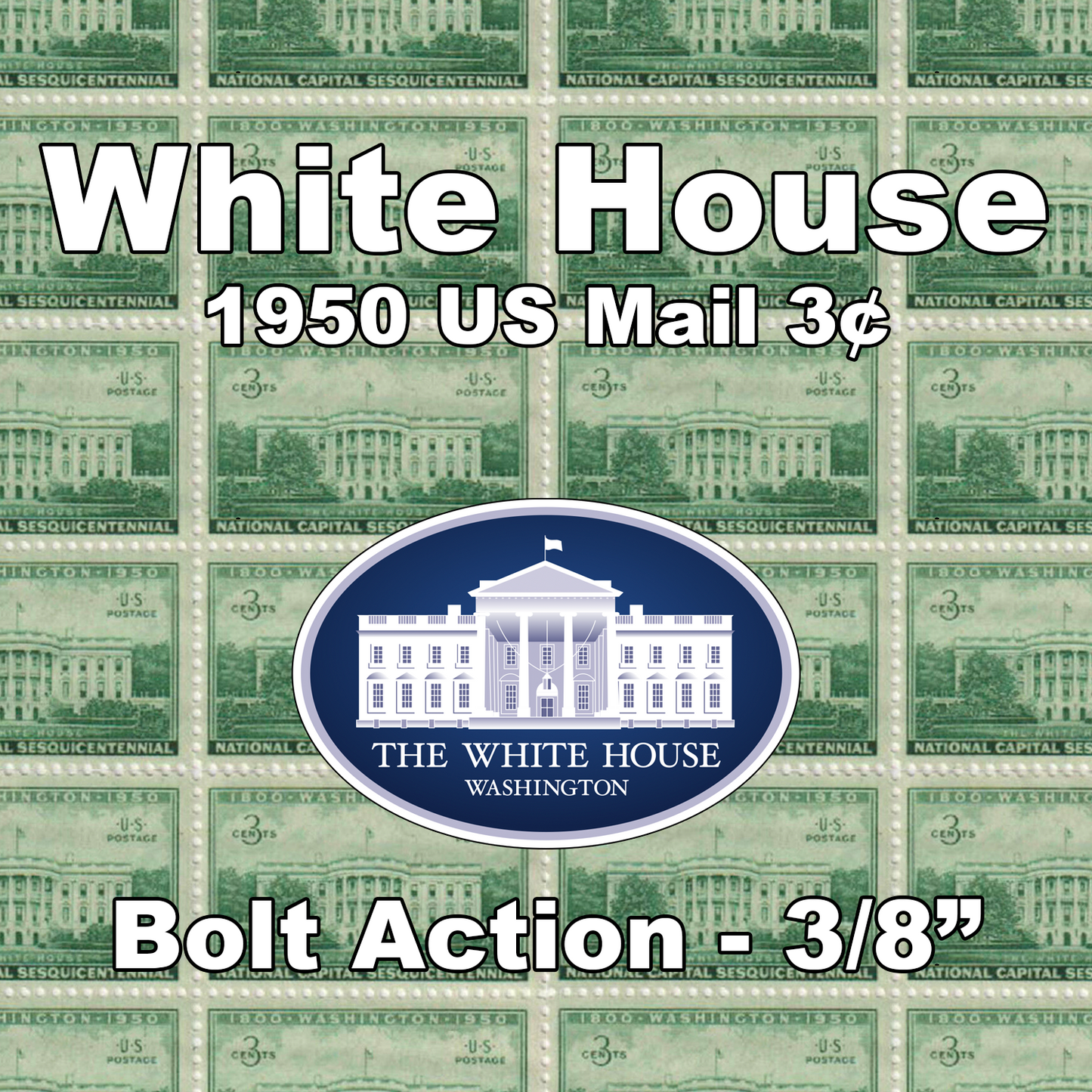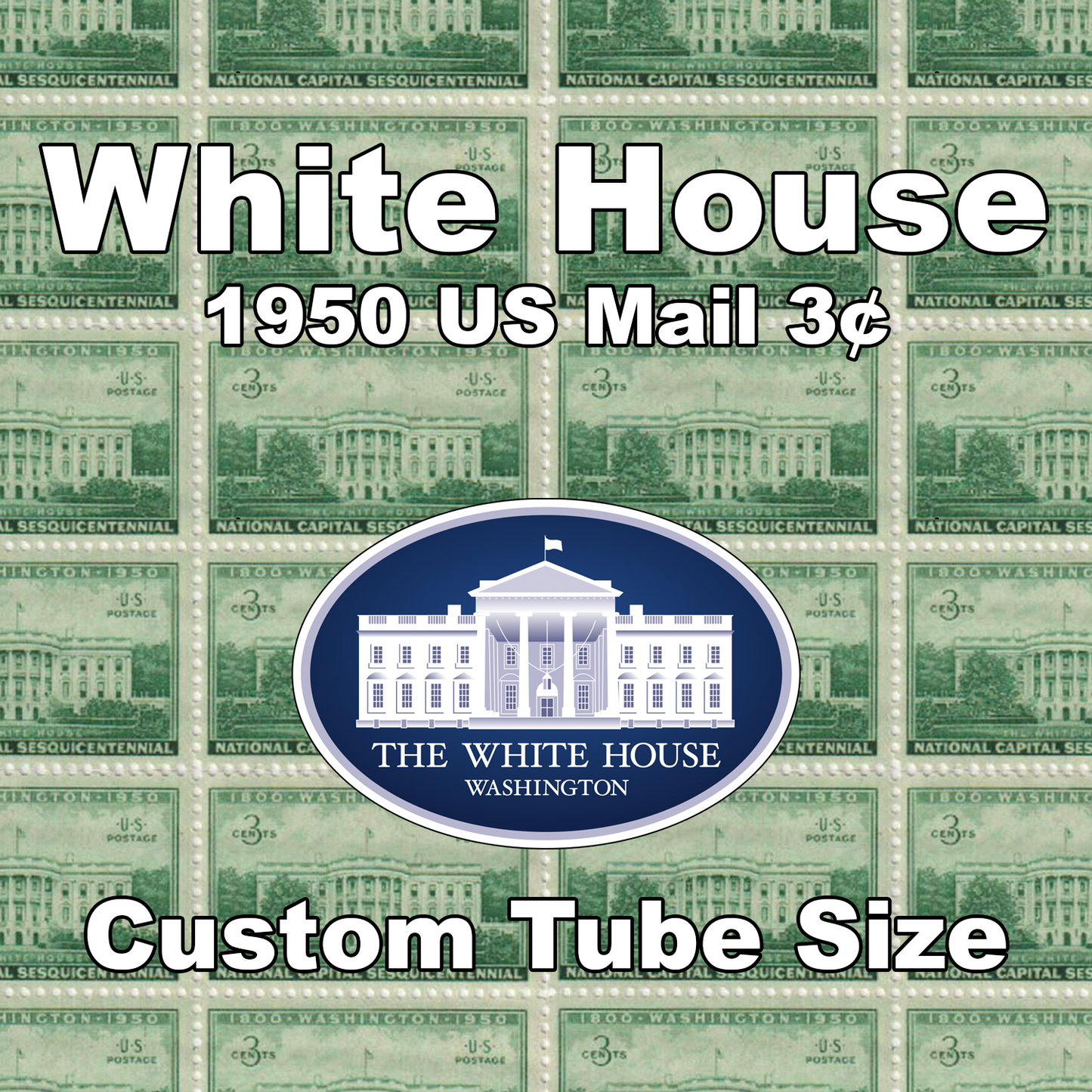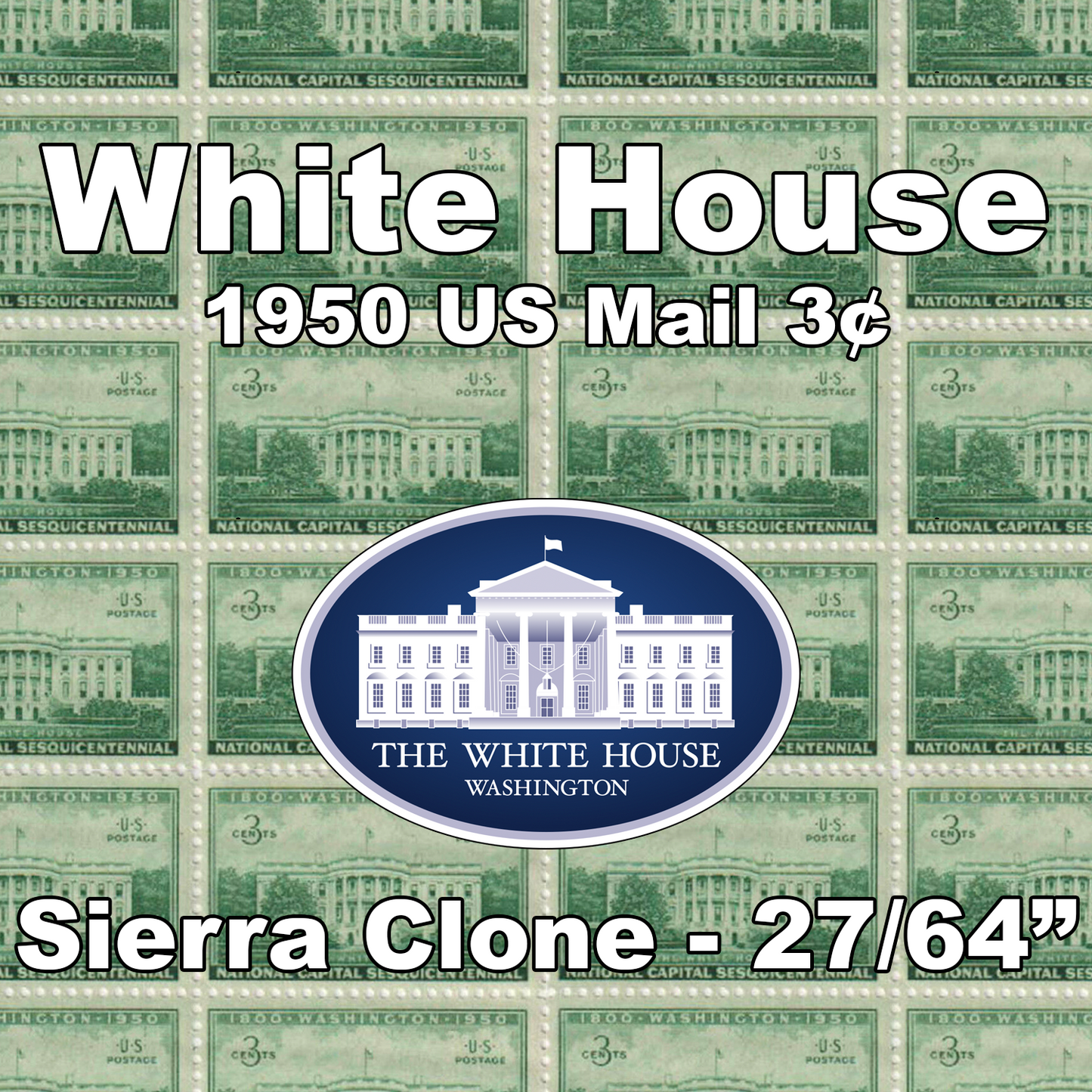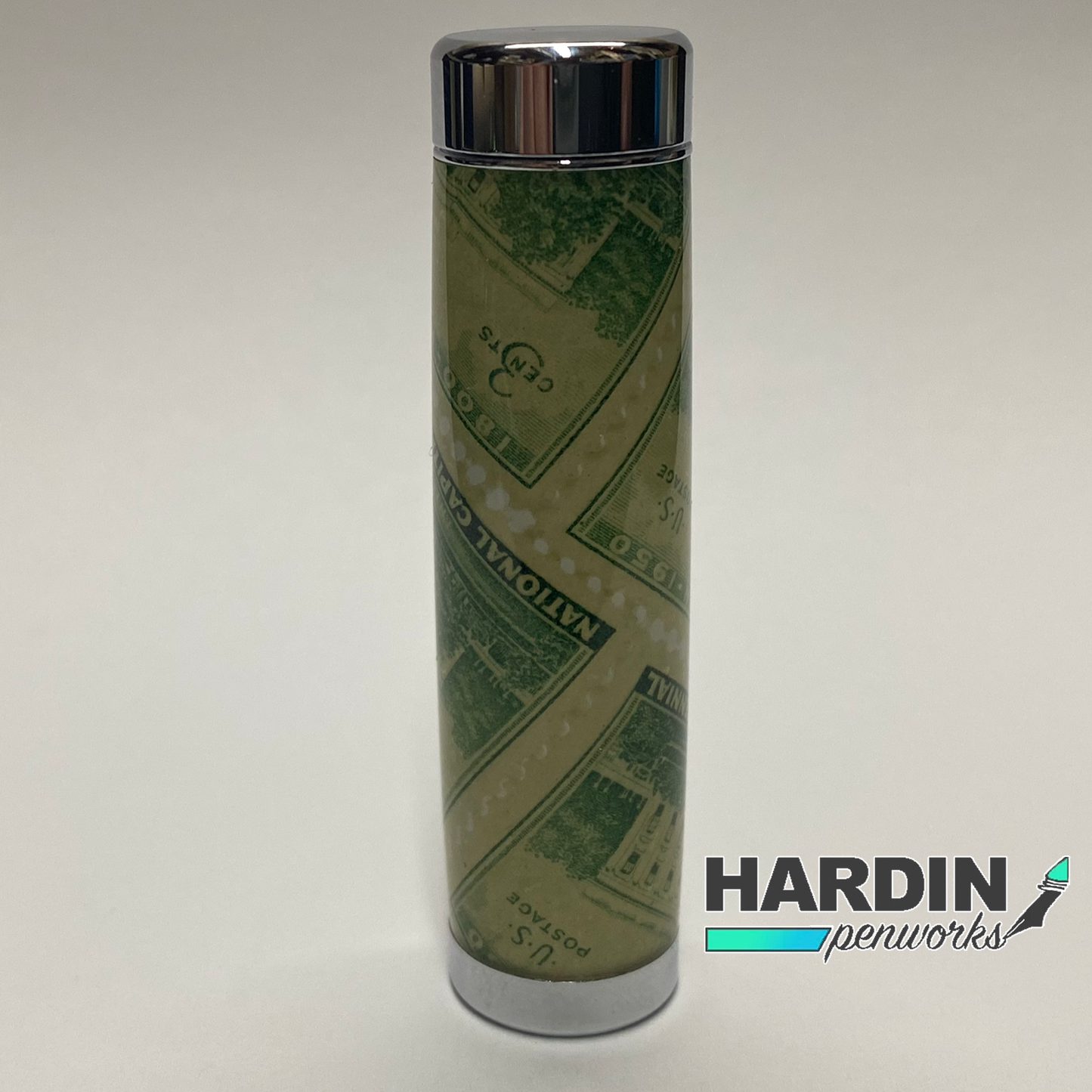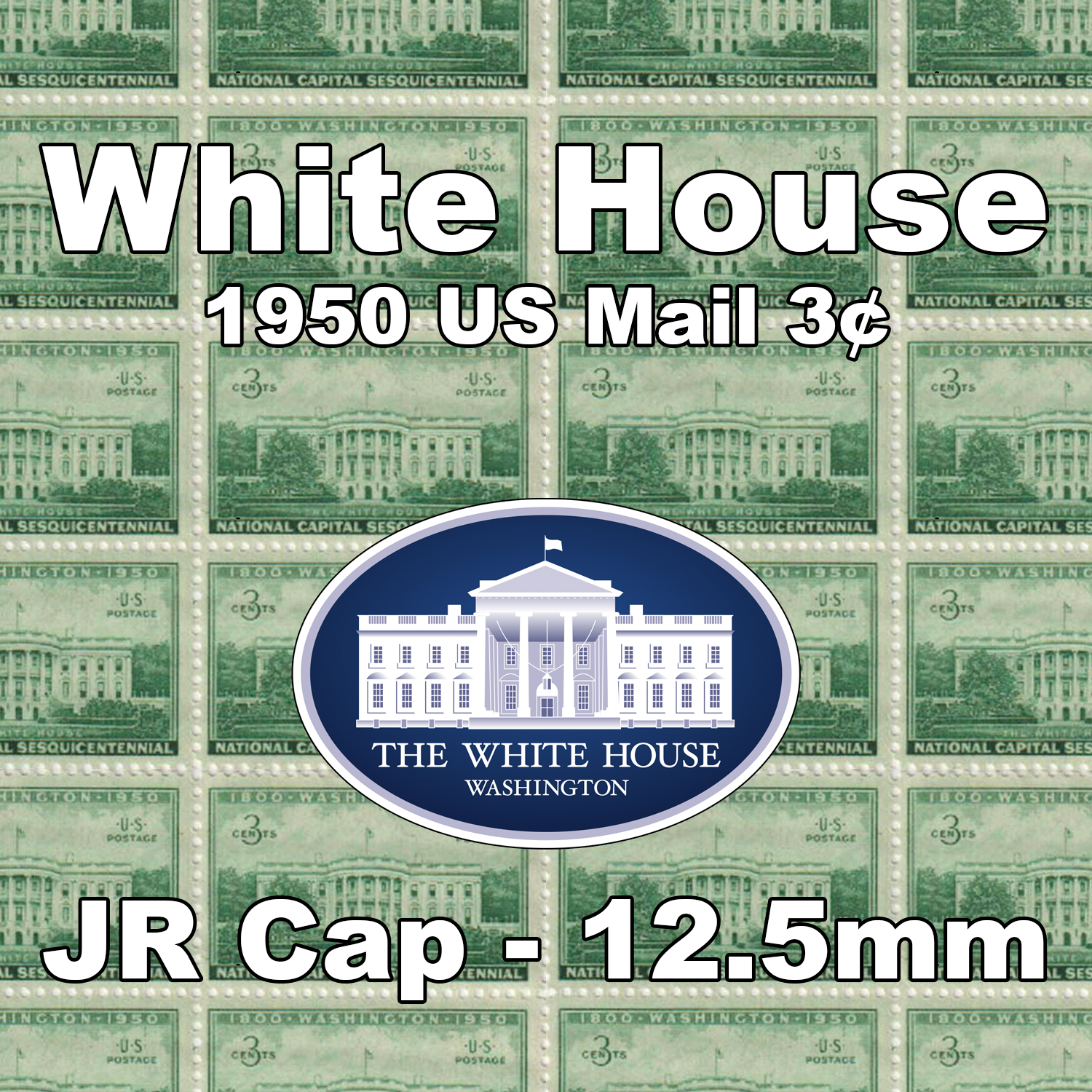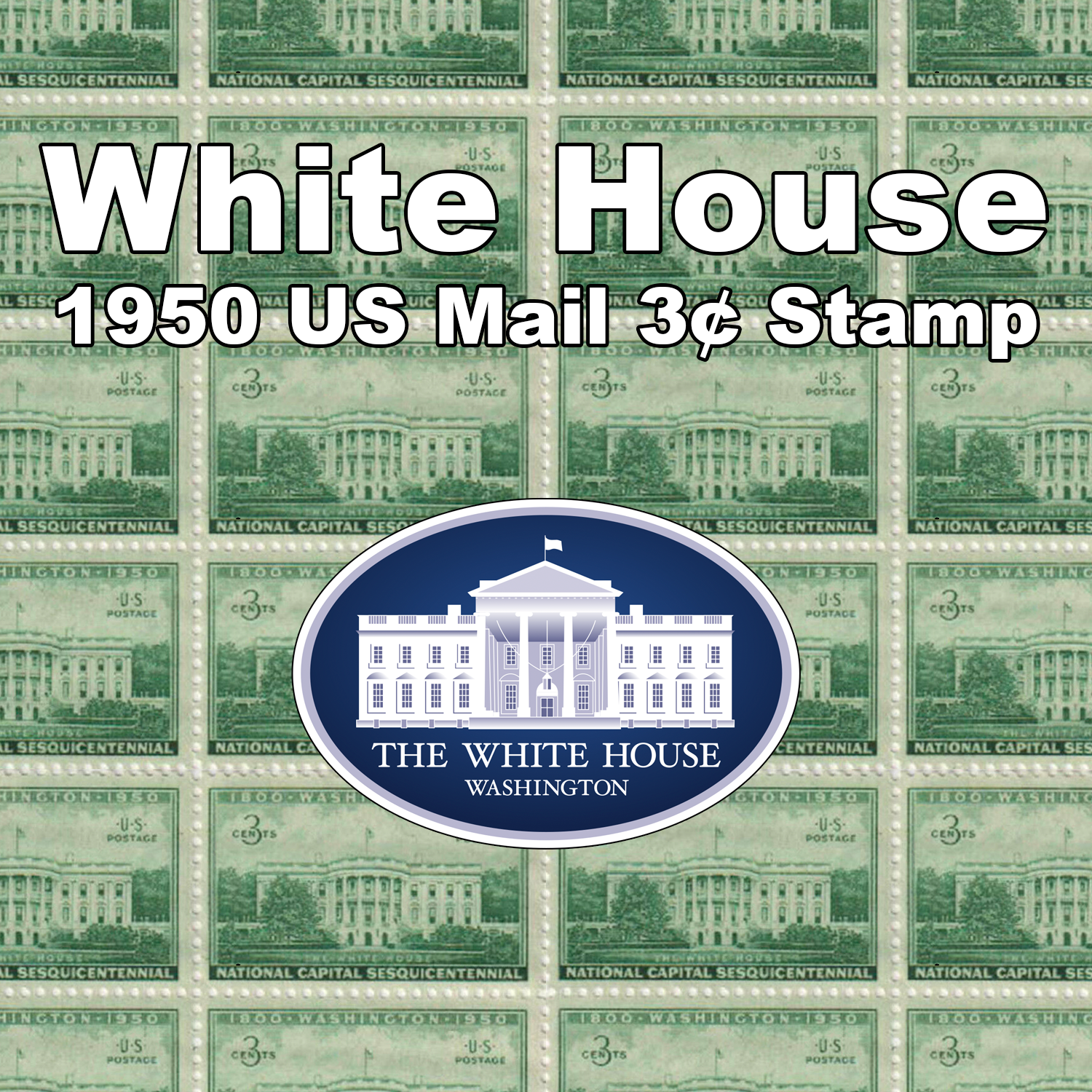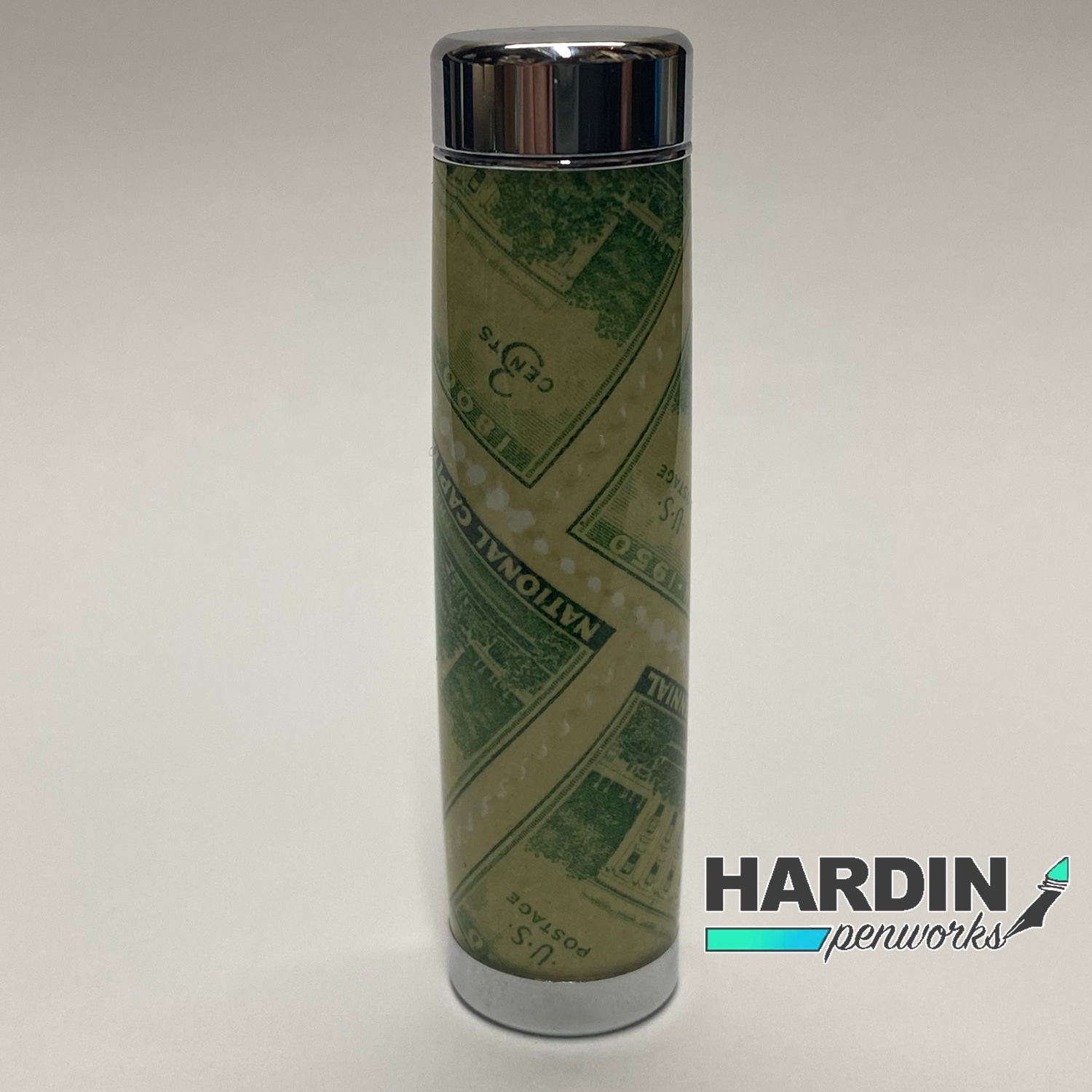White House – Pre-Tubed Stamp Blanks
White House – Pre-Tubed Stamp Blanks
Prodcut Base price with no add-on options
11 in stock
Product Price with any add-on options selected
Couldn't load pickup availability
Blanks are Label Cast blanks of vintage US Mail 1950 White House 3¢ Stamps.
_____________________________________________________________________________________________
Please allow up to two weeks for custom tube blanks.
_____________________________________________________________________________________________
White House embedded blanks are available from Stadium Pen Blanks in the following tube sizes: Jr Caps, Jr Lowers, Sierra Clones, Bolt Action, and Custom Size Tubes.
The White House original construction was completed in 1800 with John Adams as its first resident. In 1814, during the War of 1812, the mansion was set ablaze by the British Army in the Burning of Washington, destroying the interior and charring much of the exterior. Reconstruction began almost immediately, and President James Monroe moved into the partially reconstructed Executive Residence in October 1817.
The wood Stadium Pen Blanks has available is original to 1817 and removed during one of three separate renovations.
Theodore Roosevelt Renovation of 1902
In 1902, finding the White House deteriorated and cramped, Theodore Roosevelt embarked on an extensive remodeling of the Residence. Plans had been in the works for years to build a new White House or expand the original, including some quite grand designs. Roosevelt wanted to tread lightly and merely remove the Victorian decor accumulated over the previous thirty years while returning the White House to its Federal-period roots.
Calvin Coolidge Renovation of 1927
In 1927, Calvin Coolidge, tired of the leaky roof, had the attic space expanded into a full third floor by constructing a steel-frame story atop the brick and mortar walls of 1800. The extra space provided more room for the first family and shifted more servants out of the Residence. The president and first lady rented Patterson House, one mile away, for the six months it took to renovate the White House.
Harry Truman Reconstruction of 1950
In 1948, after the Truman Balcony was installed, an engineering survey found the main body of the mansion to be structurally unsound. Floors no longer merely creaked, they swayed. A -thorough examination found wooden beams had been weakened by the cutting and drilling for plumbing and wiring over the past 150 years. The addition of the 1927 steel roof and full third floor added weight the building could no longer handle. Declared to be in imminent danger of collapse, the reconstruction began in 1948.
Share
